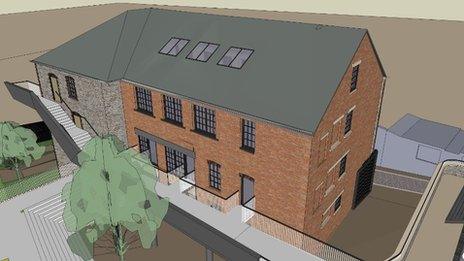Swansea blitz: Childhood memories of 'bombing horror', 80 years on
- Published
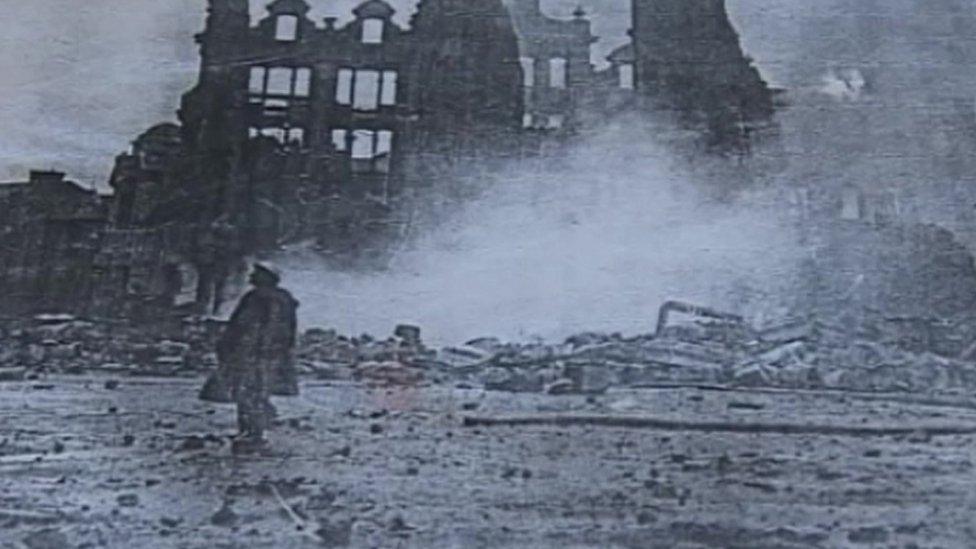
More than 40 acres of Swansea were destroyed by the three nights' of bombing in February 1941
Eighty years after Swansea endured the Three Nights' Blitz, the "horror of the bombing" is still imprinted in the memories of the children who survived.
The town was bombed more than 40 times between 1940 and 1943 in World War Two.
But Friday 19 February marks 80 years since the beginning of a deadly three-night raid in 1941, which killed 230 people, injured almost 400 and left the centre in ruins.
Marian Jones, who was only six at the time, remembers seeing the flames.
She has memories of going to an air raid shelter every night with her family in Morriston as bombs rained down.
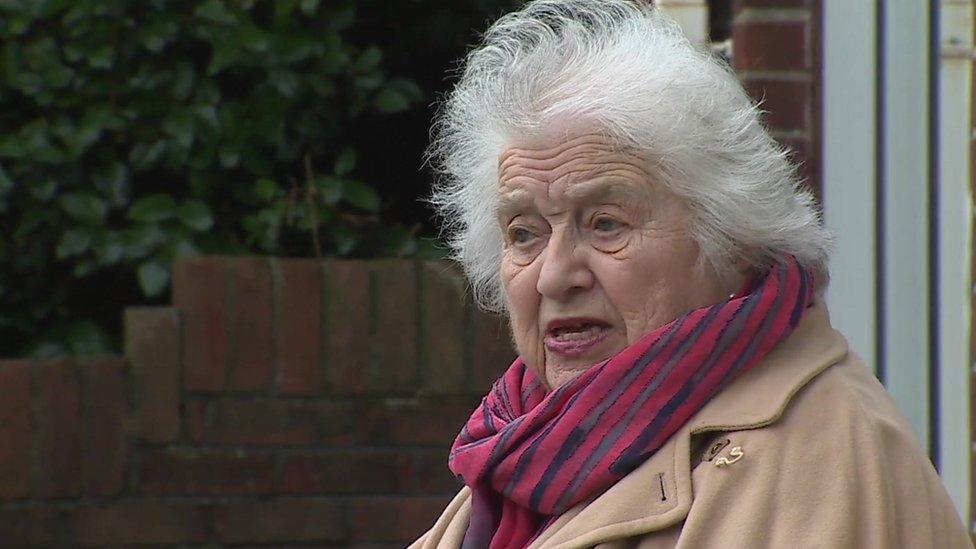
Marian Jones was just six years old but can still remember the horror of the bombing
It is a time from her childhood that she does not wish to remember.
"It wasn't pleasant, and I can remember my grandmother would not come into the shelter and my father was getting upset, and the only way she came in is because I called her and I pleaded with her to come in," said the 86-year-old.
"I can remember the horror of the bombing and seeing the flames when people went up to the hill in Morriston where it overlooked Swansea, and I don't think they will ever forget the scene that they saw."
'Twinkling lights'
Around 56,000 incendiary bombs and 89 tonnes of high-explosive bombs were dropped during the raids, and the raging fires could be seen from the other side of the Bristol Channel in Devon, as well as in Pembrokeshire.
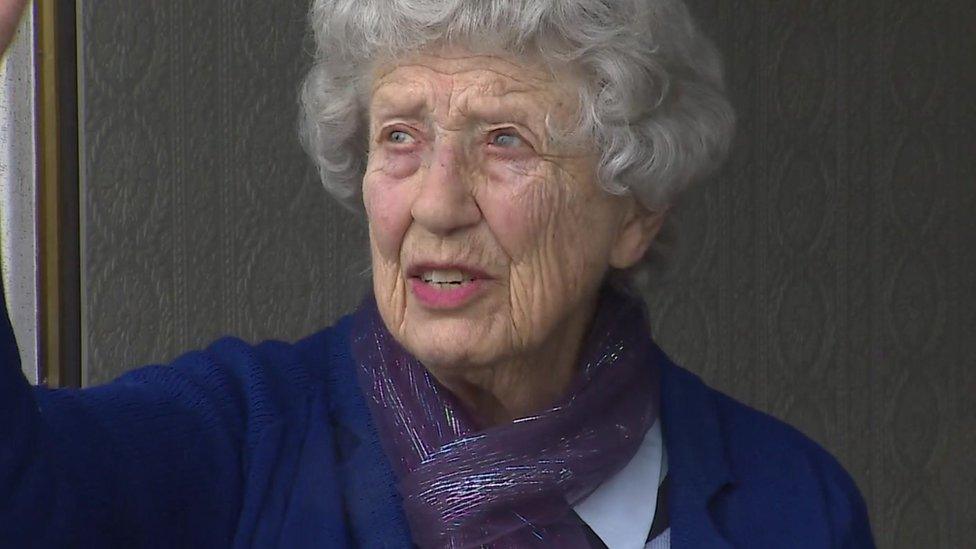
Hazel Tomalin recalls how the twinkling lights "looked like fairyland to a little girl" - but then the bombs fell
Hazel Tomalin, whose father was on Home Guard duty at the docks during the bombing, was 11 years old when she watched the "twinkling lights" in the night sky before the bombs fell.
"The sight of these incendiaries coming down, it was incredible, because we were looking at Townhill, and Townhill was looking across at us," she said.
"They were twinkling, these lights coming down. I shouldn't say fairyland, but that's what it looked like to a little girl."
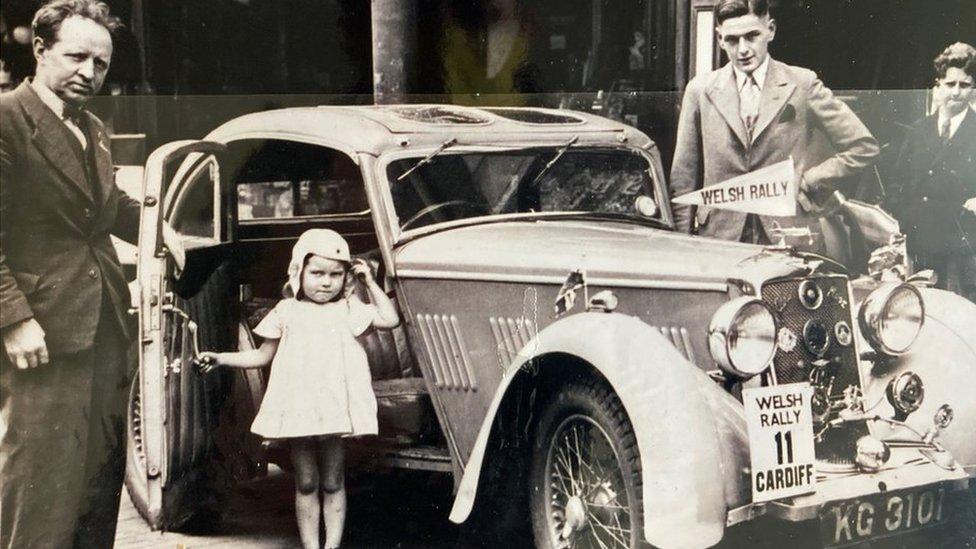
Valerie Bastian, who lived above her father's motorcycle shop on Oxford Street, remembers the bombing
Valerie Bastian, who was nine years old at the time, lived above her father's motorcycle shop in Oxford Street in the town centre.
She was coming home from Neath with her family when the bombing started. Their car was stopped by a soldier on Fabian Way, who asked them to take his wife back to Townhill, one of the worst hit areas, where their child was with a relative.
"We gave her a lift, and we were going to take her to Townhill, but at the bottom of Mount Pleasant Hill we were stopped so we had to drop her off there," she said. "And I've often wondered, I don't know if she ever got there because the incendiary bombs were being dropped and quite a lot of people were being killed."
Oxford Street was badly damaged during the raids, but miraculously the shop and family home survived.
Why was Swansea a target?
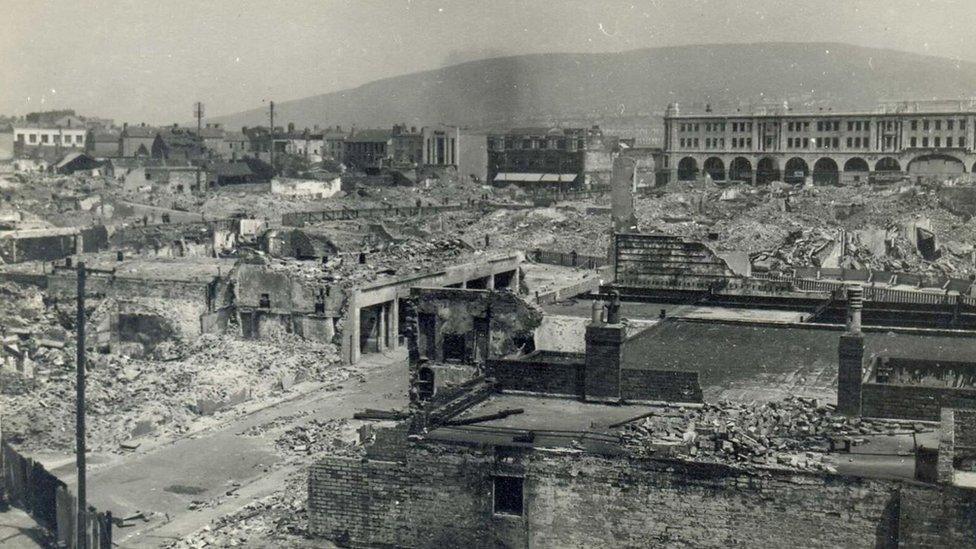
Many of Swansea's buildings were reduced to rubble over the course of three nights
Swansea was targeted because of its docks, and part of the Germans' bombing campaign was to damage exports as well as demoralise civilians and emergency services.
"In the Battle of the Atlantic, Swansea was critically important," said historian John Alban.
"Adolf Hitler issued a directive in September 1939, including Swansea in the top 10 most important ports in the United Kingdom, and makes it very clear that they'd need to be attacked, particularly in order to knock the port out."
By February 1941 Swansea had already suffered badly, with 119 people killed and 243 injured, but the raids were more isolated. The intensity of the Three Nights' Blitz was therefore "surprising", according to Dr Alban, and had a "colossal impact".
"An ARP [Air Raid Precautions] report written in March more or less says that if there had been a fourth night of bombing, that would have been the coup de grace and the authorities would not have been able to cope with it."
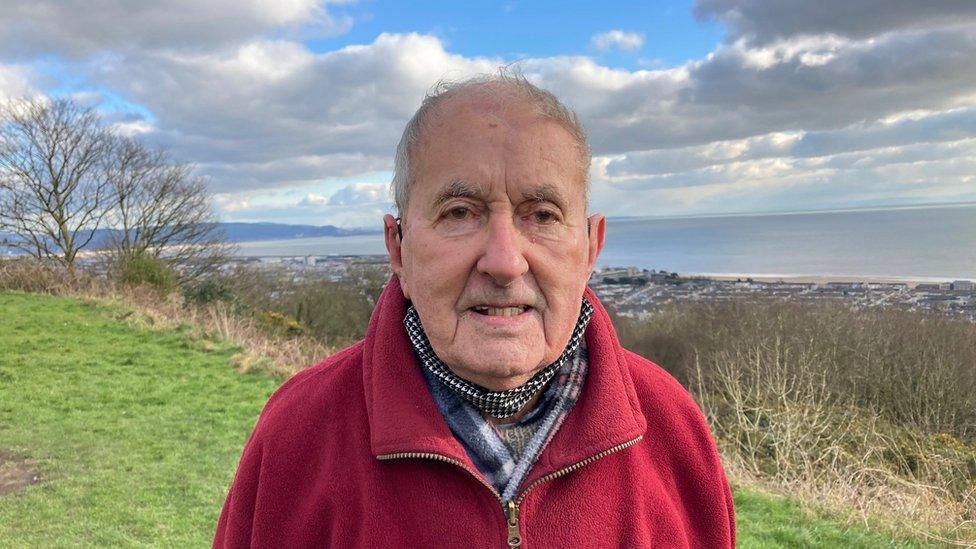
Daniel O'Shea was 14 at the time and remembers sleeping on the floor of a church hall while bombs were dropped
Fourteen-year-old Daniel O'Shea was taking cover in the family shelter in the garden when their home on Mayhill Road was destroyed during the first night of the bombing.
"We heard a couple of bombs go off elsewhere, and then this whine coming down and then a big bang outside. When we came out then, we saw that that bomb had hit the side of the house.
"It was a shock. I remember my sister came out - she was three years younger than I was - she was crying and my mother was upset," said Mr O'Shea, who is now 94.
The family spent the rest of the weekend sleeping on the floor of Pennard church hall, Gower, where they could still hear the bombing.
"It was very upsetting and worrying you know, every time you heard the sirens go in the night it was very worrying whether bombs were coming down. My mother and sister were very upset, I don't think I ever went back to the house to see it even."
Streets forever changed
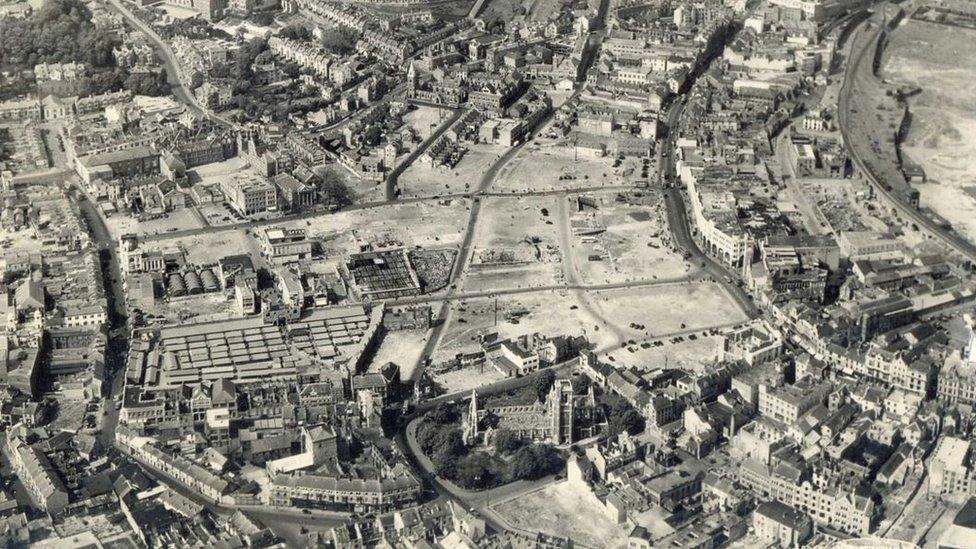
Much of the centre of Swansea was left flattened after the blitz
Not only the centre was destroyed by the Three Nights' Blitz. Entire streets were flattened, including Teilo Street in Mayhill, which was set ablaze by incendiary bombs.
These highly combustible bombs caused the most damage, according to Dr Alban.
As well as the human toll, the effect on Swansea's infrastructure was devastating, with 41 acres of the centre wiped out and water, gas and electricity mains broken.
But the reaction of the community and the local authority was to set up mobile canteens and find accommodation for the 7,000 people made homeless. The injured were diverted to workhouse infirmaries to be treated after Swansea General Hospital was bombed.
"It's the most significant event in Swansea's history - it completely changed the face of the town," said Dr Alban.
- Published15 August 2020
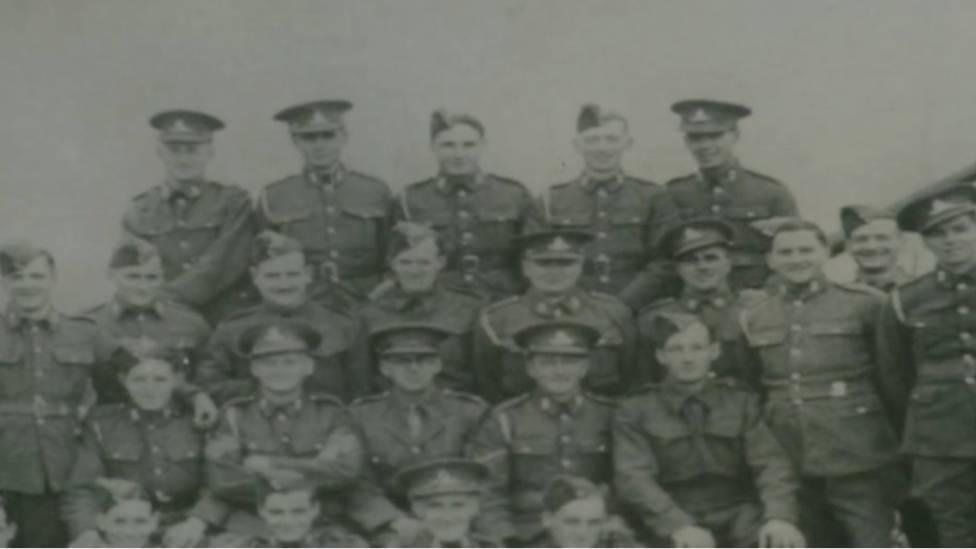
- Published27 June 2020
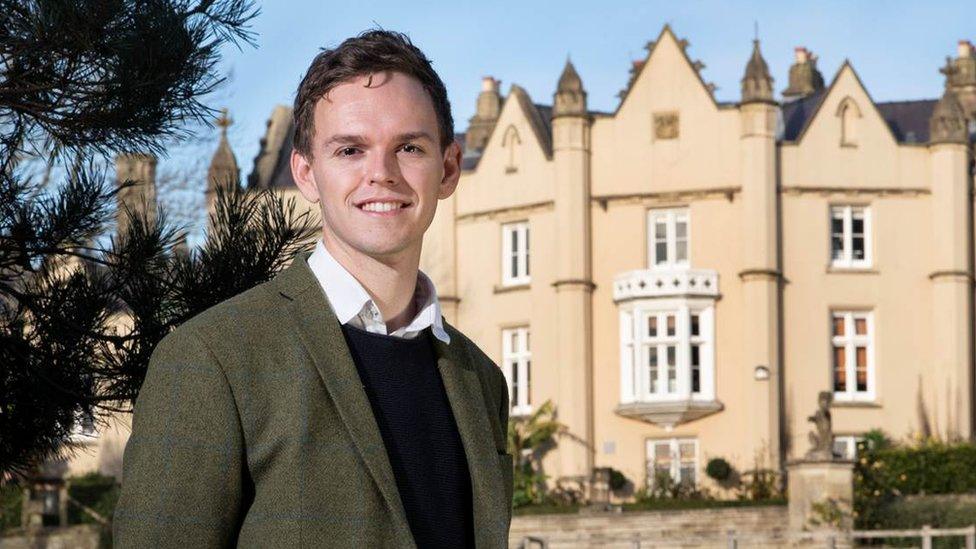
- Published19 February 2016

- Published21 July 2014
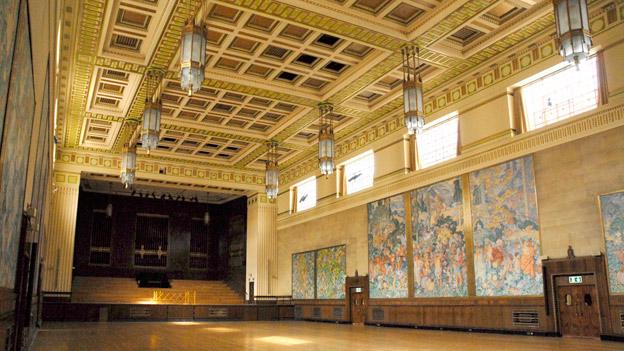
- Published5 April 2014
